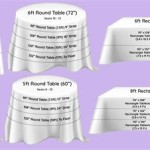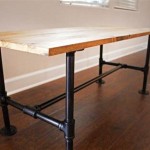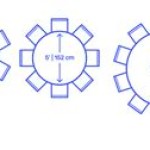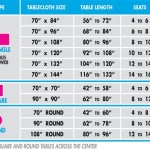Dining Room Table Selection for Dark Wood Floors
Choosing a dining room table that complements dark wood floors requires careful consideration of various design elements. The interplay of color, material, style, and scale significantly impacts the overall aesthetic and functionality of the dining space. A well-chosen table can enhance the richness and depth of dark wood floors, creating a sophisticated and inviting atmosphere. Conversely, a poorly selected table can clash with the flooring, resulting in a disjointed and unappealing room.
The dark, often rich tones of wood flooring provide a strong foundation upon which to build the dining room's design. These darker hues absorb more light, which can create a sense of intimacy and warmth. However, it is crucial to balance this darkness with lighter or contrasting elements to prevent the room from feeling too heavy or closed off. The dining table, being a central piece of furniture, plays a critical role in achieving this balance. The selection process should involve evaluating the existing shade and grain of the flooring, the available light within the room, and the desired style or ambiance. These factors will guide the selection of the right table size, shape, material, and color to work in harmony with the dark wood floors.
Material considerations are also significant. From solid wood to glass and metal, each material brings a distinctive texture and visual weight to the room. The choice of material will dictate the table's durability, maintenance requirements, and overall contribution to the dining room's aesthetic. In addition to materials, the table's finish and detailing contribute to the style and ambience of the room. A carefully selected finish can enhance the natural beauty of the wood while also providing protection against scratches and spills. The detailing, such as carved legs or inlaid patterns, can add a touch of elegance or sophistication, reflecting the overall décor theme of the house.
Color and Contrast: Achieving Visual Harmony
One of the most important considerations when choosing a dining room table for dark wood floors is the color and contrast. Dark wood floors tend to ground the room, providing a solid base. Selecting a table that provides sufficient contrast is essential to prevent the space from feeling visually monotonous or cramped. Lighter-colored tables, such as those made of light wood or painted in neutral tones, can create a striking contrast with the floor, making the table a focal point. This contrast helps to visually break up the space and prevent it from feeling too dark or heavy.
Alternatively, a table with a similar dark tone can be chosen to create a more cohesive and sophisticated look. However, when opting for a darker table, it is crucial to introduce contrast through other elements in the room, such as lighter-colored chairs, a vibrant rug, or strategically placed lighting. This will prevent the room from becoming overwhelmed by darkness. For example, a dark walnut table when paired with dark ebony floors would look harmonious. A crisp white chandelier suspended above or a runner with bright colors can act as a point of visual separation between the table and the floor.
Color temperature also plays a role in achieving visual harmony. Warm-toned dark wood floors, such as those with reddish or brownish undertones, may pair well with tables that have complementary warm tones. Conversely, cool-toned dark wood floors, such as those with grayish or bluish undertones, may be better suited to tables with cooler tones. The intention is to create a sense of balance and visual appeal.
Many dining room tables incorporate multiple materials and colors, for example, a dark wood table with a glass top. The glass top allows more of the floor to be visible, creating a sense of spaciousness and lightness. A table with metal legs can also add a touch of contemporary style and contrast with the warmth of the wood floors. When working with dark floors, any material can be used as long as the overall palette is balanced.
Material and Texture: Enhancing the Dining Room's Ambiance
The material of the dining room table contributes significantly to the room's overall ambiance. Solid wood tables exude warmth, strength, and timeless elegance. The natural grain and texture of the wood, whether oak, maple, or walnut, add to the table's visual appeal. A well-crafted solid wood table can become a cherished heirloom, adding character and depth to the dining space. Solid wood tables are resistant to scratches and can be refinished if necessary.
Glass-topped tables, on the other hand, offer a sleek and modern aesthetic. They create a sense of openness and lightness, allowing more of the floor to be visible. This can be particularly beneficial in smaller dining rooms, where maximizing visual space is crucial. Glass tables are easy to clean and maintain, making them a practical choice for busy households. However, glass can be prone to scratches and fingerprints, requiring frequent cleaning to maintain its pristine appearance. Toughened glass is often required for additional safety.
Metal tables provide a contemporary and industrial vibe. Metal legs can be paired with a variety of tabletop materials, such as wood, glass, or stone, creating a unique and stylish piece of furniture. Metal tables are durable and easy to clean, making them a practical choice for modern lifestyles. The type of metal affects the look. For example, brushed steel looks industrial, brass adds elegance. The finish of the metal also plays a role, with matte finishes offering a more subtle look and polished finishes providing a high-shine, eye-catching effect.
Beyond the primary material, the table's texture also contributes to the dining room's ambiance. A table with a smooth, polished surface can create a sense of elegance and refinement, while a table with a more rustic, textured surface can add a touch of warmth and character. The texture can also be achieved through the detailing of the table, such as carvings, inlays, or distressed finishes. These details can add visual interest and depth to the table, enhancing its overall appeal.
Size and Shape: Optimizing Space and Functionality
The size and shape of the dining room table are crucial considerations for optimizing space and functionality. The table should be appropriately sized for the dining room, allowing ample space for movement around the table and seating. Too small a table can feel lost in a large room, while a table that is too large can make the room feel cramped and uncomfortable. General rule of thumb is to allow at least 36 inches between the edge of the table and the walls or other furniture to ensure comfortable circulation. Some designers recommend 48 inches for walkways.
For smaller dining rooms, a round or oval table can be a good choice. These shapes promote conversation and create a more intimate dining experience. Round tables also tend to take up less visual space than rectangular tables, making the room feel more open. Oval tables offer a similar benefit while also providing more seating capacity than round tables. However, the number of place settings should also be considered.
Rectangular tables are a classic choice for formal dining rooms. They provide ample seating capacity and work well in longer, narrower spaces. Rectangular tables can also be extended with leaves to accommodate larger gatherings. Square tables work well in square or smaller rooms. These can be a good solution if the room is roughly square.
The height of the table is also an important consideration. Standard dining table height is typically around 30 inches. However, it is important to ensure that the table height is comfortable for all diners. The chairs should be appropriately sized for the table height, allowing ample knee room and comfortable reach to the table.
Extendable tables are a flexible option for those who entertain frequently. These tables can be expanded to accommodate larger groups and then reduced for smaller gatherings. Drop-leaf tables are another space-saving option, allowing the table to be folded down when not in use. These versatile choices can be particularly beneficial in smaller homes where space is at a premium.
Ultimately, the best dining room table is one that reflects the homeowner's personal style, complements the dark wood floors, and optimizes the space and functionality of the dining room. Thoughtful consideration of color, material, and size is essential for creating a dining space that is both beautiful and functional.

What Goes With Dark Wood Floors William Pitt Sotheby S Realty Floor Dining Room Living

What Goes With Dark Wood Floors William Pitt Sotheby S Realty

Dining Room Dark Hardwood Floor Design S Remodel Decor And Ideas Flooring Contemporary Wood

Dining Room Dark Hardwood Floors Design Photos And Ideas Dwell

Dining Room Dark Hardwood Floors Design Photos And Ideas Dwell

36 Ultra Luxury Dining Room Designs Best Of The Photos Interior Design Dark Wood Table

Dining Room Dark Stained Oak Wood Floors Design Ideas

How To Match Wood Tables Floors Grain Frame

What Furniture Goes With Dark Wood Floors Calgary

A Fresh Family Friendly Kitchen Update Better Homes Gardens Bhg Com Wood Floor Dining Room Dark Updates








